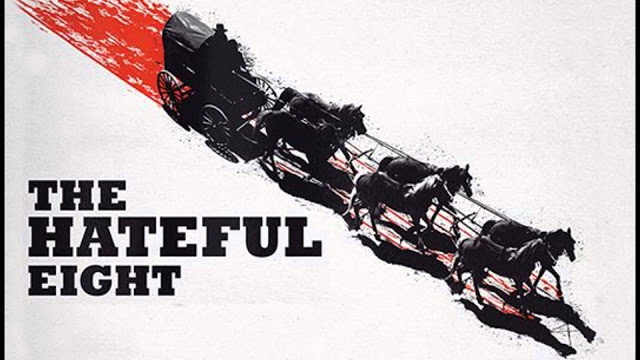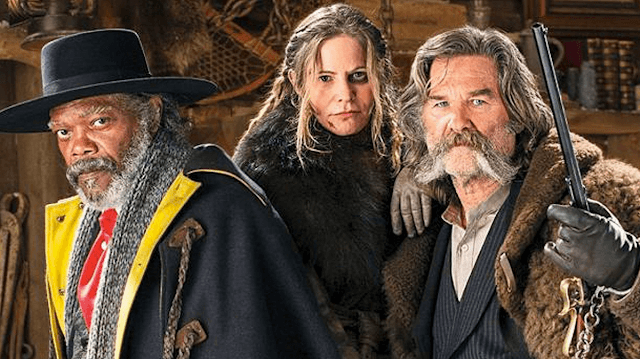The Hateful Eight is either a satirical drama drawing parallels between modern America and the violent manner in which the nation was formed or, perhaps more accurately, an entertaining film about nothing. Is this an expansive movie about the bloody foundations of the most powerful country on Earth, albeit one set primarily in a solitary claustrophobic location, or a film of small ambitions onto which we project our grandiose ideas?
The tale, set in the aftermath of the American civil war, details a collection of misfits and scoundrels forced into one another’s company during a blizzard-induced stopover at a roadhouse named Minnie’s Habberdashery. John Ruth (Kurt Russel), is a curmudgeonly bounty hunter handcuffed to his prize – the wanted criminal Daisy (Jennifer Jason Leigh). Joining them are Chris Mannix (Walter Goggins), the to-be-appointed Sherriff of Red Rock, and Major Warren (Samuel L. Jackson) an African-American whose race draws derision and hostility from those around him. The rag-tag crew who already inhabit the roadhouse view them with suspicion and, with no legal authority to exert control, the threat of guns and violence paradoxically become the characters’ only hopes of remaining safe.
Quentin Tarantino’s 8th feature, nominally a Western, features many of the tropes we associate with the acerbic director’s filmography. Dialogue spews backwards and forwards between a cast of verbose characters; their topics range from the mundane to the menacing before, inevitably, Tarantino indulges in his favoured topic of ugly, obscene racism. Ultimately, after banding back-and-forth a series of racial epithets, the titular ensemble of characters descend into prolonged graphic brutality against each other. Is there anything profound here? Or does Tarantino simply fetishise cinematic violence and the prolific use of the word “nigger” committed to celluloid above all else?
Beyond dispute, however, is the fact that even at his most superficial and glib, Tarantino is a rare talent when it comes to spinning wildly entertaining shaggy dog yarns often in the form of tributary collages assembled from obscure cinema of years gone by. His is the postmodern cinema of instant satisfaction, drawing influence from Godard and the French New Wave’s fondness for having “cool” things happen on camera for no sake other than the director believing it to be “cool” – it is often in overthinking academic circles in which these films are assigned their status or “art” rather than simple, unadulterated “entertainment”. The Hateful Eight, like much of Tarantino’s post-Jackie Brown oeuvre, is a Rorschach Test of a movie in which the viewer is invited to take as much or as little from the film as they like.
Is this a state of the nation address? Or simply an extravagant popcorn movie? To most viewers does this even matter? The answers aren’t to be found on the screen but, rather, in the hearts and minds of the audience.



No comments
Post a Comment